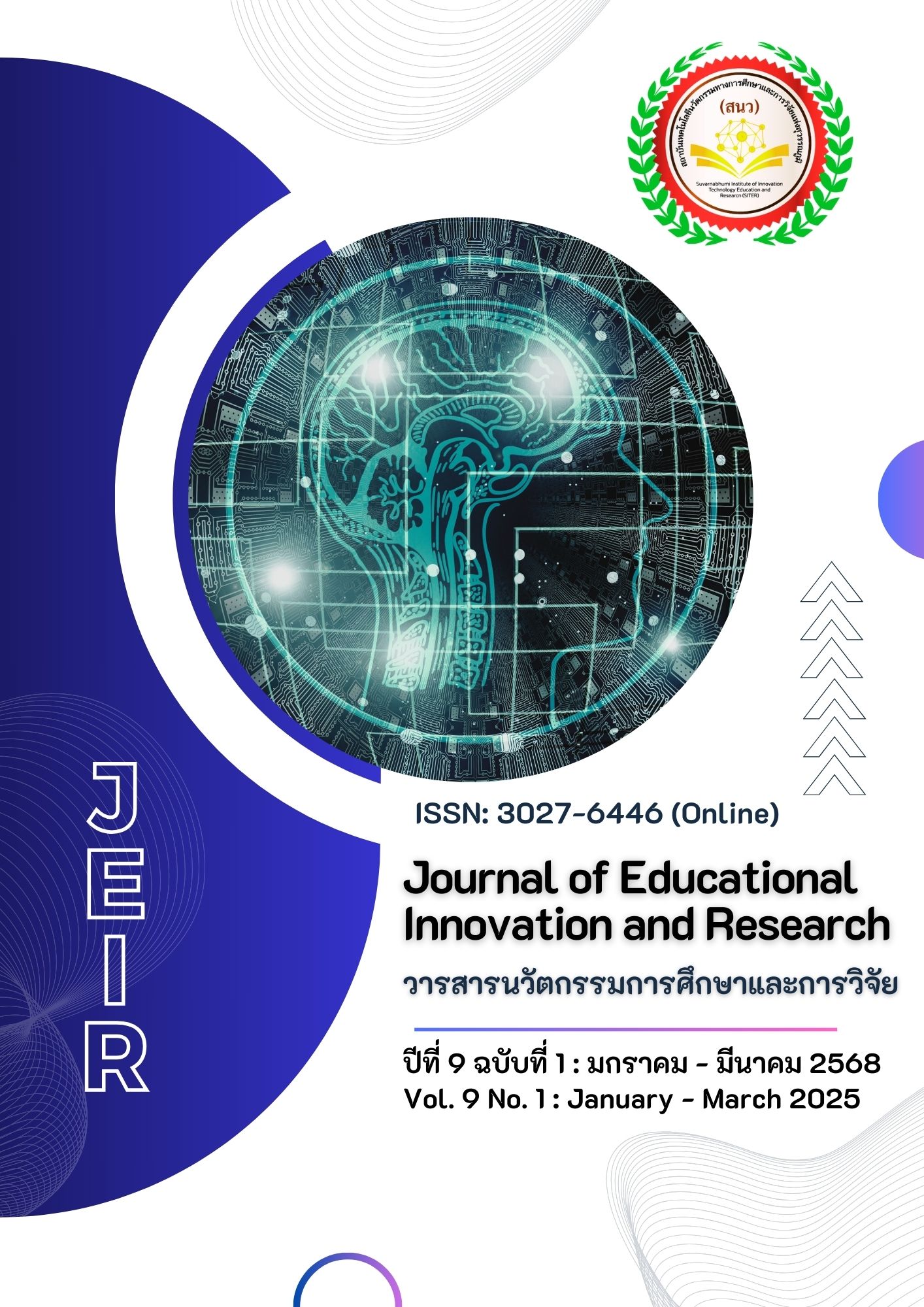Developing Creative Skills in Drawing by Organize Learning According to the Design Thinking Art Course for Primary 4 La Salle Bangkok School
Main Article Content
Abstract
Developing creative skills in drawing through design thinking learning was an educational process that emphasized promoting analytical thinking and problem-solving skills and promoting collaboration skills. The purposes of this research were to (1) compare creativity skills in drawing after design thinking learning in art subject of students with the criterion of 70 percent. (2) compare the creativity skills of students in drawing between groups using the design thinking learning and groups that uses traditional teaching. This is an Experimental Research. The sample used in this study was primary 4 students who were selected by cluster random sampling, using classrooms as the sampling unit, with a total of 2 classrooms, 30 students per classroom. The students were divided into two groups: the design thinking instruction group and the regular instruction group. The tools used in the research were: 1) Design thinking learning plan in the art subject and 2) Creativity drawing skill assessment. The data were analyzed by using arithmetic percentage, mean (x ̅), standard deviation (SD), one sample t-test and independent sample t-test. The results of this research revealed that;
1. The results of comparing creativity skills in drawing after receiving design thinking learning of the students were higher than the 70 percent threshold was statistically significance at a level of .05
2. The results of comparing creative skills in drawing after design thinking learning were higher than the control group that received traditional teaching was statistically significant difference at a level of .05
This research aims to investigate the effect of design thinking-based learning on the creative drawing skills of elementary school students. The study compared the learning outcomes of students who received design thinking-based instruction to a criterion of 70% and to a control group who received traditional instruction. The results revealed that students in the design thinking-based instruction group had significantly higher creative drawing skills than both the criterion and the control group. This suggests that design thinking-based learning is an effective approach for developing students' creative drawing skills and promoting their analytical thinking, problem-solving, and collaborative skills.
Article Details

This work is licensed under a Creative Commons Attribution-NonCommercial-NoDerivatives 4.0 International License.
References
Bunjong, V., and Khayankij, S. (2014). Effects of organizing art experiences by integrating design thinking approach on kinderarteners’ creatity. An Online Journal of Education, 9(1), 728–741.
Guilford. (1990). Modern Criticism and Theory. Longman.
Inthakamhaeng, A. (2009). Correct thinking. Behavioral Science Research Institute. Srinakharinwirot University.
Penrattanahiran, R. (2022). The development of guidance activities based on the design thinking approach to enhance learning and innovation skills (4Cs) of primary school students. NRRU Community Research Journal, 16(2), 94-107.
Phulkhetkit, S. (2020). Development of learning activities using design thinking. To enhance skills in creativity and innovation For Mathayom 6 students [Independent study, Master of Education degree. Department of Curriculum and Teaching, Naresuan University].
Rojsangrat, P., Pichayapaiboon, P., and Suwannatthachote, P. (2020). Development of an Instructional Model Using Design Thinking Approach to Create Thai Identity Products for Undergraduate Students. Journal of Education Studies, 48(3), 258-273.
Stanford d.school. (2024, November 22). Design Thinking Bootcamp Bootleg. HuffPost. https://static1.squarespace.com/static/57c6b79629687fde090a0fdd/t/58890239db29d6cc6c3338f7/1485374014340/METHODCARDS-v3-slim.pdf
Tabtom, J., and Po Ngern, W. (2022). The development of learner development activities on Thai song Dam patterns using design thinking place–based education in Ban Nong Ri community, Bo phloi district, Kanchananaburi province to promote the innovator for high school students. Journal of Education Silapakorn University, 20(1), 218-240.


